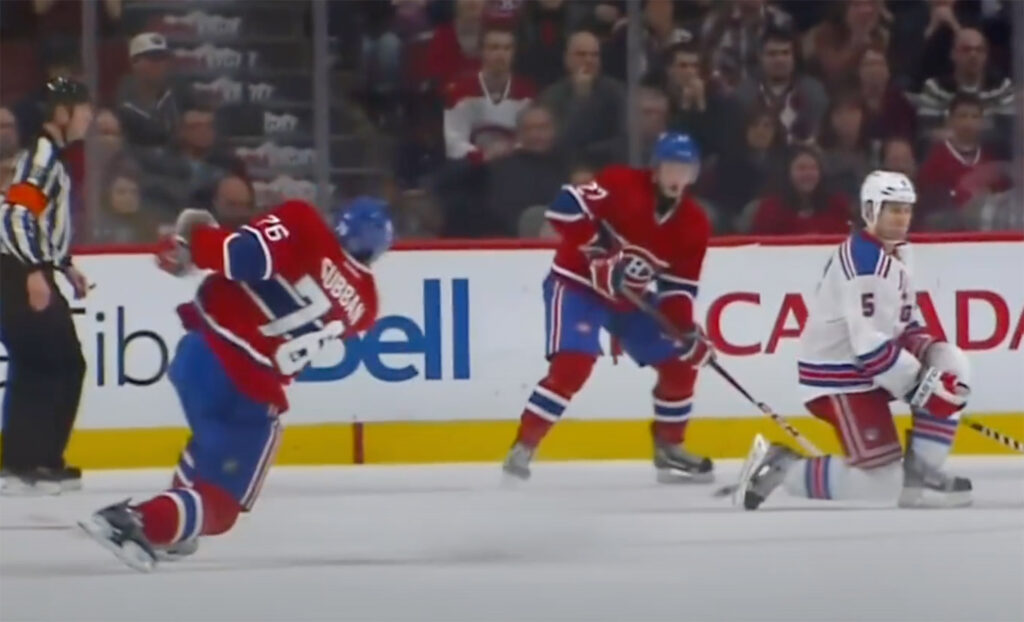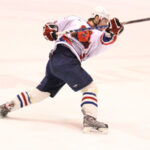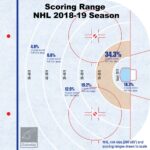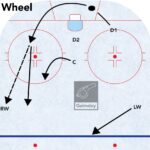In hockey, players contribute to the success of the team in various ways.
The most popular types are your goal scorers, playmakers, offensive defensemen and netminders.
These players are typically the most recognizable players on the ice as they pose a constant threat to the opposition.
Think of player like Connor McDavid, who can score almost at will.
The coach on the opposing team will put his best defensive pairing to make is more difficult for McDavid to score. Usually, to no avail – McDavid is a beast.
Meanwhile, you have players that provide value in other facets of the game.
Think of your faceoff specialists, two-way players, enforcers and grinders.
They cover elements that go unnoticed on the ice but can easily change the momentum of the game.
The same applies for shot blockers, a stat that even the NHL and coaches pick up on.
So, let’s get to the question at hand…
What is a Shot Blocker in Hockey?
A shot blocker is any skater who blocks a shot attempt on behalf of their goaltender. Blocked shots have been tracked by the NHL since the 2005-06 season with the all-time leader at 2,044. The majority of shot blockers on the leaderboard are defensemen since they typically cover the front of their own net.
For some, shot blocking can be an art form as they lay their body on the line to block the shot.
However, given that defensemen are commonly credited for blocking shots, it’s likely because they are in the line of fire.
That said, while it can be said shot blocks are frequently accidental, it’s no accident that the defensemen are well-positioned to block the shot.
When the opposition has control of the puck in your zone, there’s at least one defenseman always positioned in front of the net.
This is to make sure that your opponents are not left alone with your goalie.
Ideally, the defenseman is stationed between the opposition player and the goalie.
As a result, shots stemming from the point, the slot or from the player they are defending against may never make it to the net.
That’s because the puck hit the defenseman rather than find its path to the goalie or the net.
Add the fact that defensemen are typically big and tall, and you have a recipe for inadvertent (yet, expected) blocked shots.
Fearless Shot Blockers
While shot blocking didn’t become a recognized stat until the new millennium, players have used the strategy in past.
Back when helmets weren’t a requirement, you’d have players risking their entire body to block a shot.
And a slapshot off the head doesn’t seem exactly anyone would want to experience.
While I couldn’t find an old clip with a player laying out on the line like that (no helmet), here is a recent video of Austin Watson with such an attempt.
Keep in mind now that if your helmet comes during active play, you are no longer an eligible player.
That is, the player must skate off the ice or put the helmet back on right away before playing the puck again.
At the time, Watson was not subject to that rule.
Who is the All-time leader in Blocked Shots?
To date, the now retired Kris Russell is the all-time leader with 2,044 blocked shots.
The closest player behind him is Mark Giordano with 2,031 who also happens to be active.
Considering that the top blockers hover around 2 shot blocks per game, Giordano will likely surpass Russell on the NHL leaderboard very soon.
Shot Blocking Gear
Since defensemen are often the unintended recipient of a puck shot, you’ll see them taking the necessary precautions to protect themselves.
The most vulnerable area is at the top of the skate. A shot to the ankle area left unprotected can sting or cause an injury.
Players have the option to wear what is known as “shot blocker” or a fender.
The shot blocker is said to be less intrusive on the stride as it contours the skate.
The fender is plastic that attaches over the skate and is highly effective in mitigating any injury.
Final Thoughts
While it is mostly true that shot blockers go unappreciated in hockey, there are times when fans and hockey analysts recognize the effort.
For example, players will be praised for sliding on the ice to block a shot while killing a penalty.
This is double appreciated if the puck deflects out of the zone to relieve the powerplay pressure.
Meanwhile, you’ll occasionally see a player make that miracle save where their hands or body stop the puck on an open or empty net.
The puck crossing the goal line seemed anything but a sure thing, only to be swapped away from a shot blocker.
Expect to see those on a sports highlight reel, in slow motion and from different angles.
You get to really appreciate these finer details in a hockey game.






